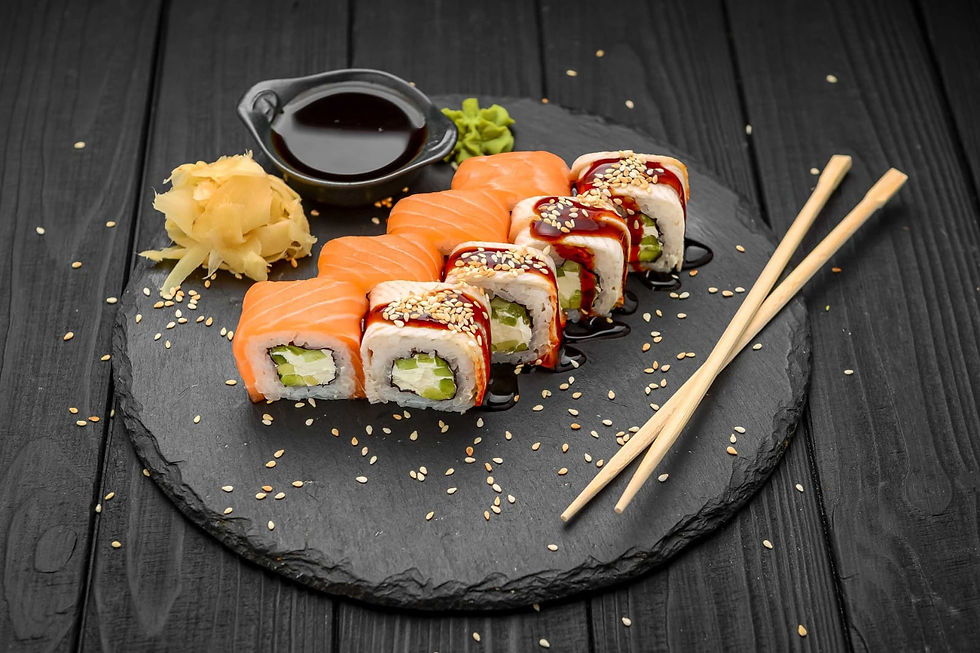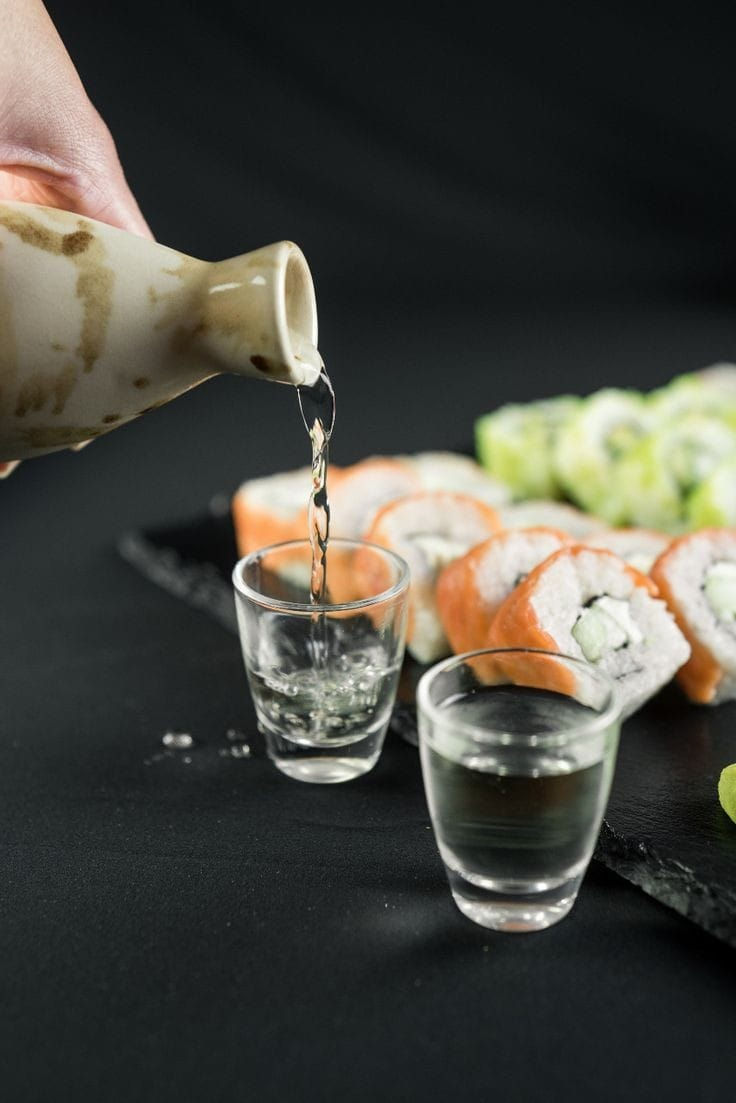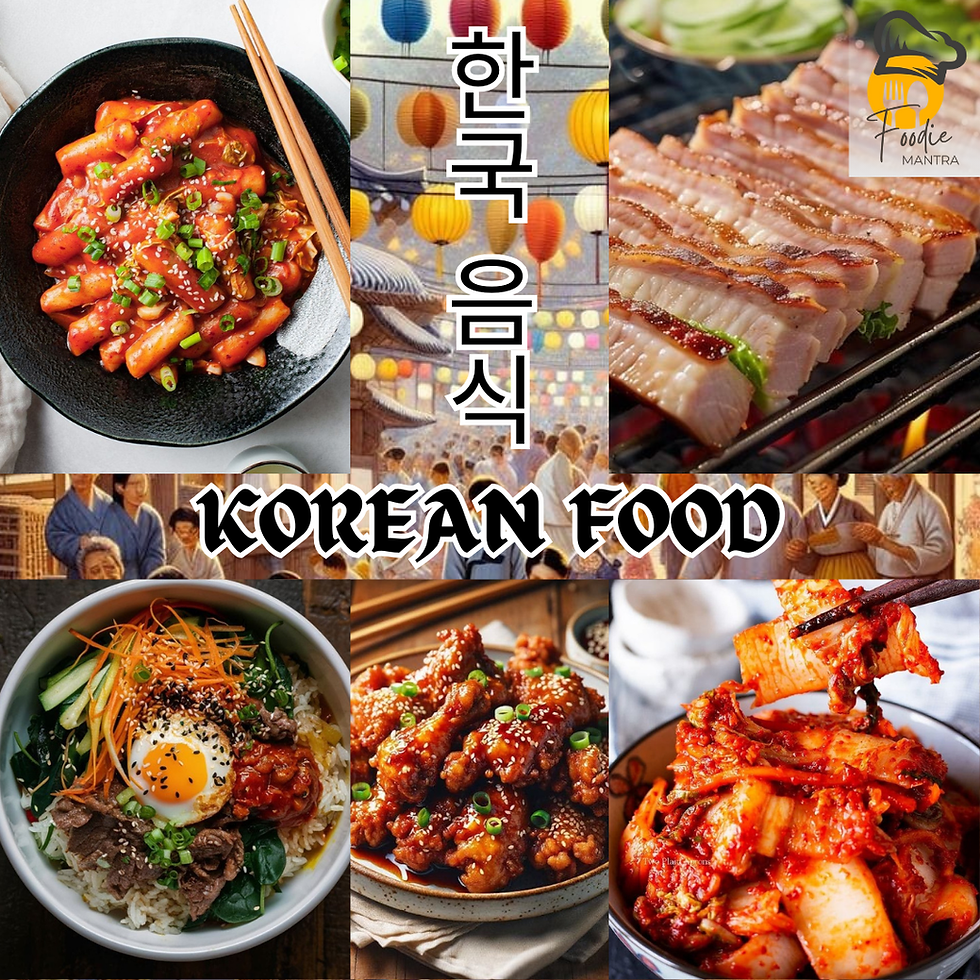Sushi, Ramen, and the Rise of "Sushiramas": Japan’s Culinary Influence in India
- Amit Kumar

- Nov 20, 2024
- 4 min read

Regardless of their extreme differences, India and Japan are suddenly finding common ground in an unexpected place: the dinner table. Yes, my friends, with ramen restaurants establishing themselves in Bangalore, sushi bars opening up in Delhi, and a whole new breed of "Sushiramas" debuting, Japan's once-foreign gastronomic delights have started to take over the Indian food scene. And if you think that's a made-up term, think again. It's actually a cross between ramen and sushi, delivered with a dash of spice and a side of bewilderment.
Sushi: A Japanese Import with Indian Swagger

Let's begin with the main attraction: sushi. Sushi used to be as exotic in India as a subway map in Tokyo. As if from a science fiction film, you would hear people discussing raw fish and seaweed in whispers. However, a few years later, you'll see sushi served at parties with paneer tikka and samosas.
After much hesitancy, Indian foodies welcomed sushi with open arms and their discriminating palates. The uncooked fish? No issue. Like the sour fermented fish curries of the northeast or the dubious street snacks you'll find everywhere, we've eaten more than our share of strange foods. I take it that this is a bit raw fish atop vinegary rice? Sushi also satisfies our craving for finger foods because it's convenient to eat with a nice tiny wooden stick rather than a fork and knife.
But in typical Indian manner, we have tailored sushi to our palates. Now you'll discover sushi with chutney (yep, chutney on sushi—don't criticize it until you've tried it), sushi rolls filled with paneer (because why wouldn't we throw in some paneer?), and "tandoori sushi" (because who can resist the smokey goodness of a tandoor?). The sushi community seems to have experienced an identity crisis, asking itself, "Am I Japanese or... a kebab?"
Ramen: Not Just a Cup of Instant Noodles Anymore

In the past, eating ramen was a common college student ritual in India because it was affordable, quick, and filling for those on a tight budget. However, the famous noodle soup from Japan has transcended from meals in dorm rooms to fine dining. These days, ramen is delivered in elegant bowls with soft-boiled eggs and the theatrical flair of a waiter who converses with you as though you were at a restaurant with a Michelin star.
Even while original ramen isn't particularly spicy, Indians have naturally managed to make it hotter. As if to remind the noodles, “This is India, baby,” you can now have ramen with the scorching punch of chile oil, additional green chilies, and a hint of spice. Additionally, Indian ramen bowls frequently contain chicken, mutton, or even a whole kebab, whereas Japanese ramen is renowned for its delicate broth and straightforward toppings like pig belly or bamboo shoots. Because you can eat a full meal instead of just a bowl of noodles.
However, the "ramen burgers"—an invention in which crispy, noodle-like discs of ramen are used in place of buns—are the real revolution. Imagine holding a ramen patty in place of fluffy bread when you're eating a burger. Even if it's unclear if this amazing mashup is a burger, ramen, or some sort of modernist art, it's nevertheless delicious and has taken over the streets.
Sushiramas: The Lovechild of Sushi and Ramen

Fusion cuisine is not new to India's innovative culinary landscape, but the sushirama elevates it to a whole new level. The sushirama is the ideal union of Japanese sophistication and Indian hunger, fusing the exquisite artistry of sushi with the relaxing slurpability of ramen. Sushi rice wrapped in ramen noodles, filled with tempura prawns, and dusted with a large amount of masala are common ingredients in these dishes. There are elements of ramen and sushi, as well as a lot of "what on earth is happening here?" However, Indians are more fond of food that makes you stop, grin, and think, "Okay, I never thought this would work, but it totally does," than anything else.
The Sake Debate: To Drink or Not to Drink?

While we're talking about Japan, we should also mention sake, which is a rice wine with a balance of elegance and strength. The fondness of "hard" drinks in India is, of course, the troublesome part. Here comes sake, which has a stronger alcohol level than whisky but is more understated. When an Indian takes a taste of sake for the first time, they typically raise an eyebrow and silently wonder if they are drinking rice or expensive water. Additionally, you haven't really tasted fusion food at its best if you haven't drunk sake with pani puri.
Conclusion: India Meets Japan—It’s a Match Made in Foodie Heaven
Is Japan's culinary revolution ready for India? Of course. Despite being more specialized than biryani or pav bhaji, sushi and ramen have gained popularity, which is evidence of India's expanding taste for international cuisine. And in true Indian fashion, we've added our own twist, whether it's a hot ramen dish or sushi served with tandoori.
A whole new era of fusion cuisine has begun in India as a result of the Japanese culinary influence finding a genuine home there. Who knows? It's possible that "Sushirama" may eventually be offered alongside standard butter chicken. We live in a weird, delicious universe where the sole rule is to try anything that tastes good, even if it doesn't make sense.


Nice blog
I love Japanese food
Wowww